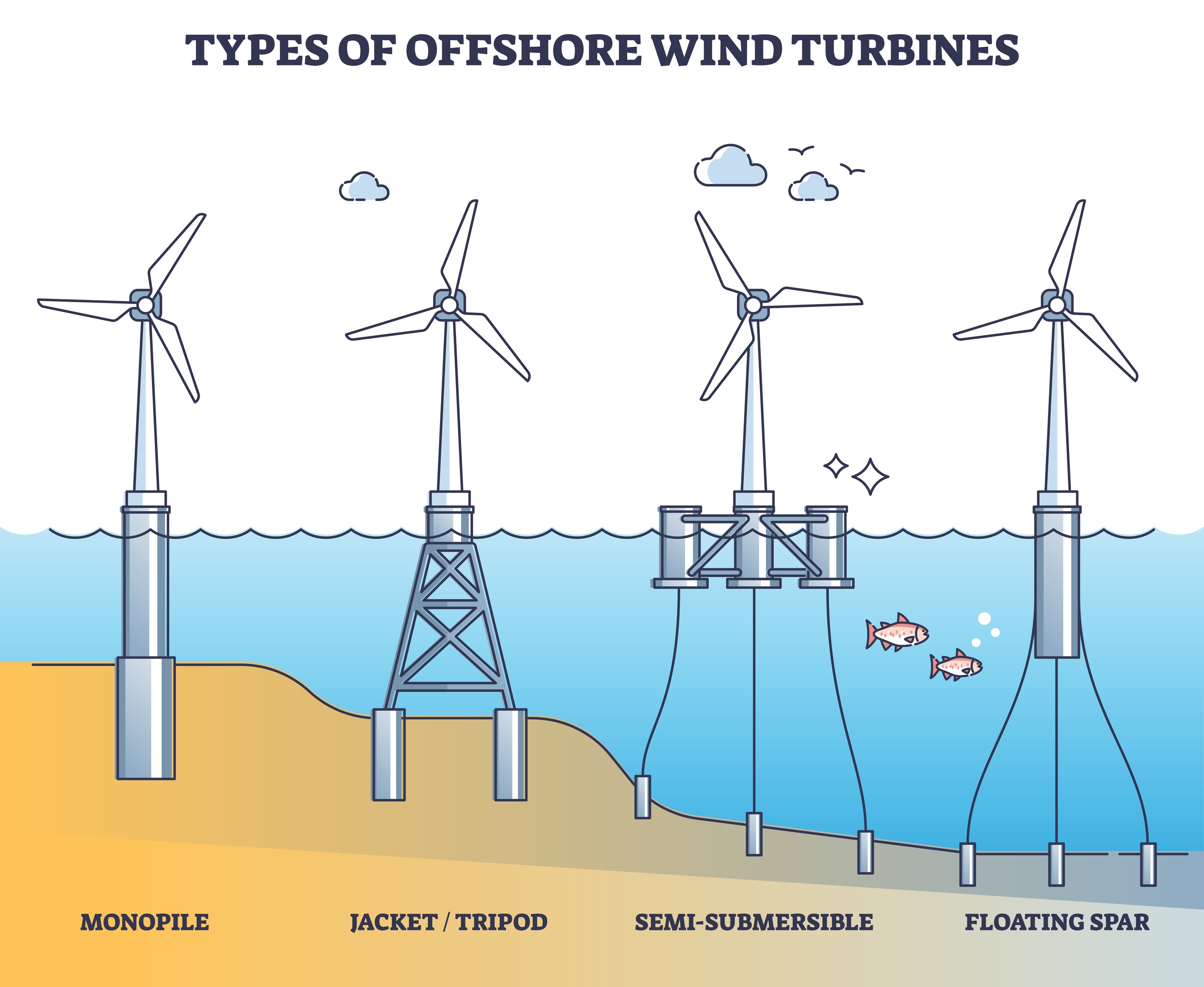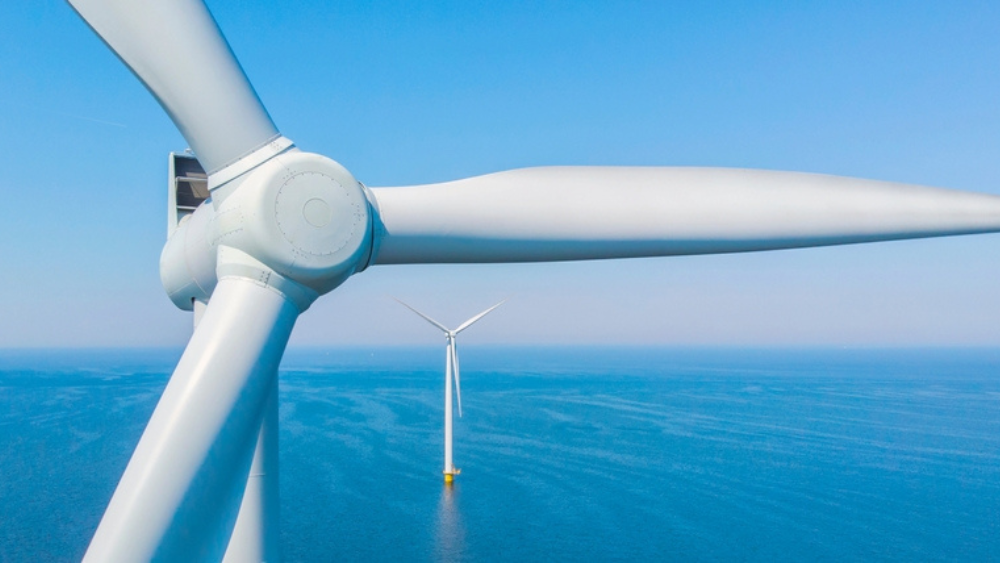Norway’s plans to harvest renewable energy from the salty breeze of the North Sea will attract both innovators, fledgling start-ups, and mature players of the ocean wind industry. Considering the scale of Norway’s ocean wind plans, the initiative will place the country above its North Sea neighbour UK when it comes to per capita wind harvesting, enabling Norway to contribute heavily to the global push toward Net Zero.
The World Energy Outlook 2022, published by the International Energy Agency (IEA), suggests that government reactions to the current energy crisis could be a crucial turning point in the path toward Net Zero Emissions. In the IEA’s Net Zero Emissions scenario for 2050 the leading means of cutting electricity sector emissions are wind and solar power, and it is said that their global share of energy production should rise from 10% in 2021 to 40% by 2030, and 70% by 2050. The IEA see a need for wind power additions of over 400 gigawatts, with more than 20% of this anticipated to come from the developing offshore wind industry.
Onsagers: See our services
With a population of 5,5 million people, albeit with a long coastal line, the ocean wind targets of 30 gigawatts by 2040 would set Norway apart from its neighbours as well as giving a potentially world leading contribution toward the IEA targets for growth in offshore wind. In comparison, with similar access to the energy resources of the North Sea, the United Kingdom presently produces 14 gigawatts of ocean wind power, with the UK aiming for 50 gigawatts in 2030, which is relatively modest given that the UK population stands at over 12 times that of Norway.
Even with the UK’s less ambitious target there are already signs of inadequate support from the UK government. In a recent auction there was no interest from investors in taking up the option to develop UK offshore wind sites, indicating that the UK government’s investment/pricing structure for offshore wind may not be optimal.
Alongside this the UK Prime Minister Rishi Sunak recently introduced delays to several green policies, risking further decreasing the attractiveness of the UK as a market for the renewable energy industry. Even if a 50-gigawatt target is achieved, UK with its 67 million people would still be dwarfed by Norway’s ambitions on a per capita basis. To put this in context, the Norwegian target for offshore wind is almost on a par with Norway's total power production during 2022 and yet with the right regulatory framework and clear government backing it seems entirely achievable for this aspirational Nordic nation.
- Read in-depth: IEA World Energy Outlook 2022
- Read also: UK climate goals seen at risk after offshore wind spurns auction
As for Norway, the expected completion of the first auction is December 2023.
- Read more: Announces the first competitions for offshore wind
- Read more: The North Seas can be the world’s biggest power plant
Three new areas of ocean wind potential were also introduced in September 2023 with potential calls for tenders in 2025.
Norway’s plans for 30 gigawatts by 2040
The Norwegian authorities have drawn up plans for achieving 30 gigawatts of offshore wind energy by 2040. There are on-going discussions in Norway as to what effect this will have on the power grid and energy structure, with big changes being needed to adapt to such a large-scale power source being distributed offshore.
That aside, the ambitious 30-gigawatt goal will attract, and will have to attract, competent players – a mix of innovators, start-ups, and mature actors. Many of the latter can probably be found with links to the present Norwegian offshore oil and gas industry and these are likely contenders for licences and sub-licences, but numerous international players and stakeholders are also expected to be enticed by the prospects.
Any successful large-scale development will surely have to bring forward a triple pronged approach involving:
- Governmental grants and/or investment
- Consortiums with overseas investment participation
- Innovations in technology
We expect most enterprises to employ a combination of all three approaches.
Offshore wind is still a new endeavour, and any operation will demand a robust economy, probably with outside/overseas private investments.
The Norwegian government will also, we assume, be interested in making grants and other sources of funding/support available, as ocean wind endeavours will be in the national interest. The industrial cluster Norwegian Offshore Wind, created as a part of the Norwegian Innovation Clusters program, will have a key role.
Innovations will be needed to develop viable solutions going forward. That means there will be a need to identify, register, protect and license intellectual property.
Ocean wind and intellectual property
For a company working with ocean wind, that intellectual property should involve patents for new technical solutions. Patents allow for a monopoly extending as long as 20 years and can bring advantages in the marketplace for the patent holder, as well as stimulating competition in relation to new forms of technology. Also, any patent can be licensed and so be an added source of income for the innovating company.
Just like the American moon landing in the sixties brought about a multitude of innovations, ocean wind initiatives will certainly do the same. If for no other reason that the North Sea poses challenges that are not there with land-based wind turbines. The constant pounding of waves and how to secure the turbine to the seabed, to name but two factors.

With consortiums, a salient point will be the question of intellectual properties and assets that are expected to be developed as part of the project, and how these should be distributed among the parties.
Says Norwegian Minister of Petroleum and Energy Terje Aasland:
– Collaboration is a key to success, and I am very satisfied with all the input we received in the public consultation. It has improved the announcement. Together, we make it possible to develop new industry, increase renewable power production and facilitate innovation and technology development.
Exporting intellectual property and insights
Given the proper administration of innovations, methods, processes and know-how of ocean wind, there is a great opportunity for Norwegian companies to export their products and their expertise.
That has a potential that extends far beyond Norwegian waters. Norway can become world expert in wind and export both know-how, technology and intellectual property to other countries, along with selling surplus energy, as ocean wind keeps growing as a global and sustainable source of power.
So in this respect, Norway can punch above its weight and at the same time we can find the answer to the tough question: Hva skal vi leve av etter oljen? (In rough translation for the anglophones: What will we live on after oil? As a means to exploit the energy wealth of the North Sea and take Norway through the energy transition, offshore wind can easily be seen as “the new oil”.







